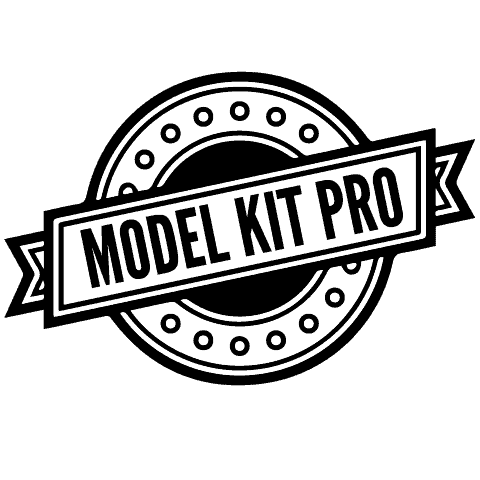Model kits are produced by the millions and give hours of pleasure to hobbyists around the world. They’re sold in hobby and craft stores as well as toy, department, drug stores and big box retail stores.
How are model kits made?
- Plastic models are generally produced using a process called injection molding.
- A model kit manufacturer will create a “tool” (two halves of steel plate that have been engraved with the shape of the kit’s parts).
- They will then press the two tools together and inject liquid styrene plastic into the engraving.
- When the plastic cools and hardens, the parts are popped out of the tool.
- This becomes one “sprue” of parts of a model kit.
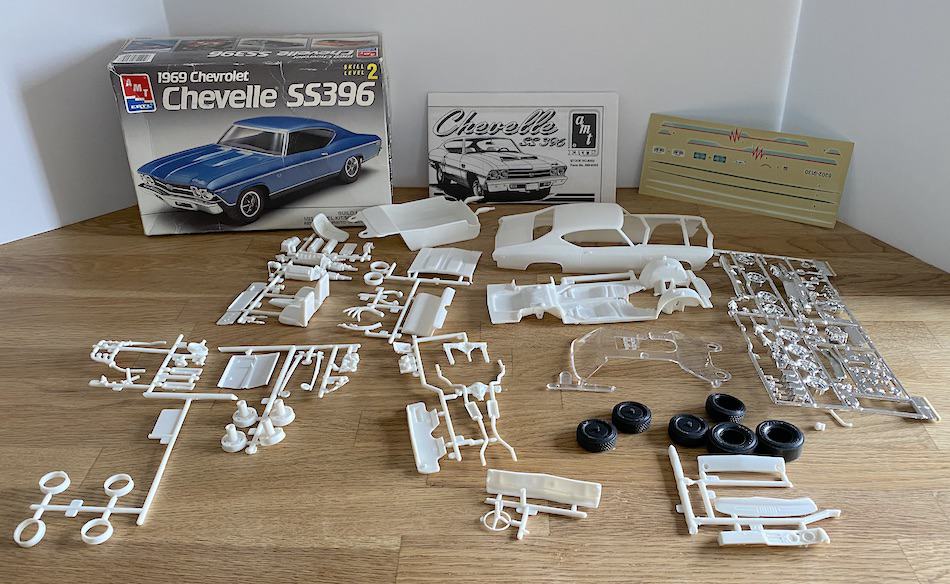
Having built model kits since my teenage years I decided to do research on how model kits are made. I found it to be very interesting and I hope you do to.
A Quick Look at Model Kit Making History
Models have been found buried in tombs of Ancient Egypt to represent the possessions taken into the next world. These included scale models of buildings, boats, and furniture.
In the eighteenth and nineteenth century during the industrial revolution inventors of new tools, machines and other objects tried out their ideas by building them in miniature.
Industrial technology was found to have its own beauty, and large machines like locomotives were admired and copied in miniature.
In the early twentieth century airplanes and ships were made into scale model kits using balsa wood. Balsa wood pieces were machine-cut to fit together easily and could be painted and rigged like the originals although they were fragile.
In the 1920s, some firms produced scale models of their products out of metal and wood as promotional models. Many of these early models are highly sought after by collectors.
For two reasons World War II moved modeling into a full-scale industry and hobby. The first was that plastics were invented and perfected during the years before and during the war. The availability of plastic made it ideal for mass-produced model kits. The second was that the machines of the war aroused the public’s interest in modeling. Fighters and bombers intrigued many hobbyists who saw the real aircraft during the war years.
Revell introduced its first all-plastic model kit of the 1910 Maxwell in 1951. By the mid 1950’s kits were becoming more customizable with more details. During the sixties the hobby grew to where there were thousands of choices covering hundreds of different subjects.

In the 2000’s modeling has grown to where the model manufacturers produce more models than all the auto makers in the U.S. combined.
Materials Used to Make a Model Kit
Almost all models currently being manufactured are made of plastic. This type of plastic is called Polystyrene. It is the essential raw material for the majority of scale models made today. It is purchased in bulk quantities for molding the parts by the manufacturer. These pellets are purchased in common colors, but additional pigments can be added to the plastic while it is being melted.
Other important parts of the model kit include decals, the instruction sheet, and the box. The box front usually bears a full-color photo or an artist’s detailed depiction of the completed model, or a photo of the original object . Designs, layouts, photos, and artwork are prepared by artists in the model-maker’s design studio. These are printed by specialized printers.
Balsa wood is another material that is used for model making. Sometimes the balsa wood had outlines stamped on it that the builder could follow when cutting out pieces. Some kits had an assortment of wood that was packaged together with a set of patterns and instructions for the modeler to follow.
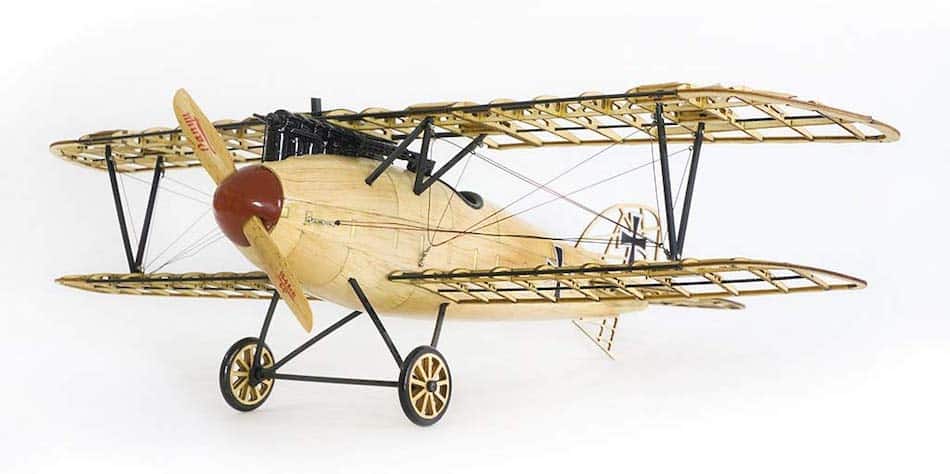
On some kits the model builder used their imagination and skill to scale, cut, assemble, and detail wood models. Balsa wood is still sold for model building, but plastic is used more widely.
There are also model kits made of metal that are gaining in popularity around the world. Some of these may have working parts such as a steam engine or gear driven drive systems.
How Model Kits are Designed
The cost of creating a new design can be very expensive for the manufacturer ranging up to $250,000 and beyond. From inception to production can take up to one year.
The process begins by taking hundreds of photographs from every angle of the working car. The photos are taken of both the inside and outside along with photos of the measurements for the designer to use in the studio.
For a new car design, car manufacturers give model makers computerized information on part specifications. This happens sometimes even before the first actual automobile has been assembled. The model designer uses (CADD) software to sort this information and create the measurements and configuration that will be used to make a scale design.
This information is transferred to drawings that will be used to make the molds. Skilled artists follow the designer’s drawings and carve out a pattern model from balsa or other soft wood.
This wooden pattern is coated with an epoxy resin that will harden when it cures. The wooden piece is removed from the resin, and the resin has trapped the shape of the piece in a cavity mold. A core mold of resin is made from the cavity mold; the two fit closely together, but there is a small space between them. The plastic model part will be formed in this space.
A number of these parts that will be molded on a single form of plastic called a tree. The tree is usually roughly rectangular along its outer edge so it will fit in a box.
The resin molds are used to make the individual tools for each of the model parts, using a pantograph to copy the exact shape of each piece and draw it at the smaller scale of the actual model. When the tool maker has completed the scaled tool, he polishes it to a high sheen and adds more details by hand.
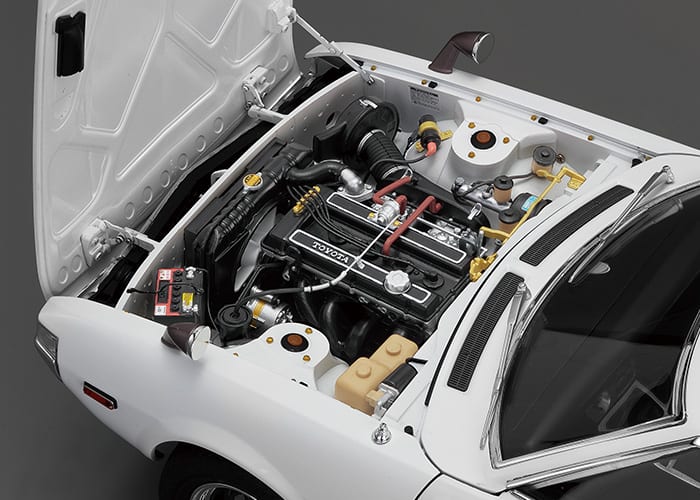
Certain artists work on the paper portions of the kit. Other artists look at the photographs of the real automobile and design decals for the model. These may be copies of real decals on the car, or they may be other design features like racing stripes.
This video provides insights into the industrial machinery required to make model kits and also the craftsmanship necessary in their creation by the Japanese model maker Bandai.
How Model Kits are Molded into Parts
The individual steel tools for the separate parts of the model are taken into the factory where they are placed in a larger frame called the die. The die is lifted into the cavity of the injection molding machine.
The storage hopper above the machine is filled with confetti-like pellets of plastic. When molding is about to begin, the pellets are melted to 500 degrees F then pumped into the mold. In several seconds, the tree forms, the plastic cools, and the tool opens slightly allowing the plastic tree to fall out onto a conveyor belt.
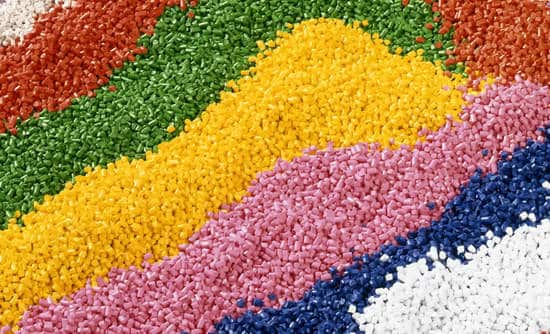
At the package assembly area, assembly-line workers sit along a conveyor belt that feeds box bottoms to them. They select one of each of the trees of model parts from a series of bins behind them, slip the trees into plastic bags, add sheets of decals and folded instructions, close the bag, and put it in the bottom of the box. The bottoms travel along the conveyor to receive its cover and then is shrink wrapped.
Toy model manufacturers are able to recycle much of the waste associated with manufacturing plastic models. Plastic waste can be melted and remixed in future batches. Steel from tool making is collected and sent to a metal recycler. Paper products are made from recycled paper. Happy Modeling!
Related Questions
What are model cars made of? Today’s die-cast models are usually made from zinc alloy or pressed steel. Model kits are usually mostly plastic, with some parts, like axles, being metal or tires being rubber. There have also been occasions when resins and balsa wood have been used to make model cars.
What are some of the scale sizes for model cars?
- 1:43 Scale is a model approximately 3 to 5 inches in length.
- 1:24 scale is a model approximately 5 to 8 inches in length.
- 1:18 scale is a model approximately 8 to 11 inches in length.
- 1:12 scale is a model approximately 14 to 16 inches in length.
What is model glue made of? Tube Glue or Model Cement is a gel-like substance that contains a chemical, such as Toluene, that when applied to the joining surfaces of a plastic model forms a membrane that bonds the two surfaces together. A tube of model cement is inexpensive and can be purchased at most hobby, craft and hardware stores.
